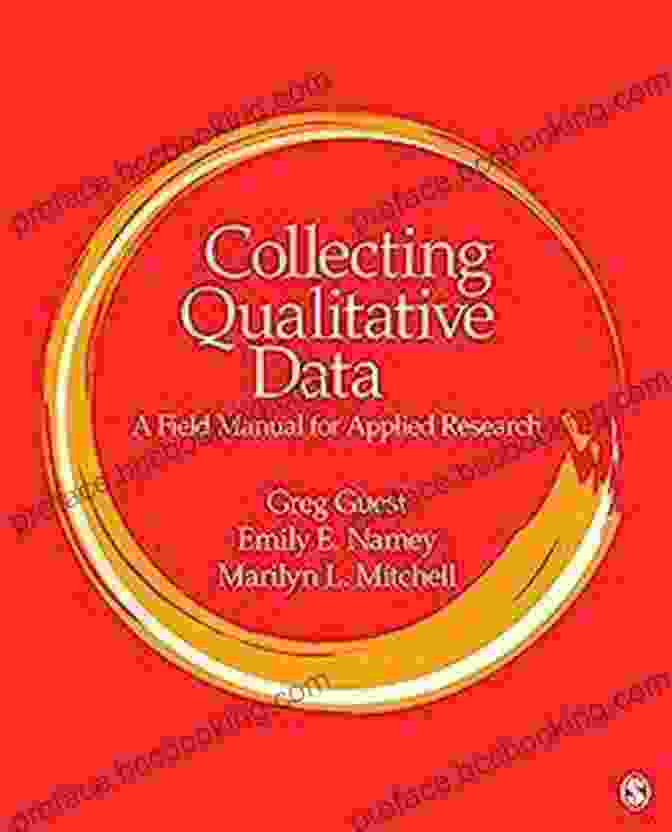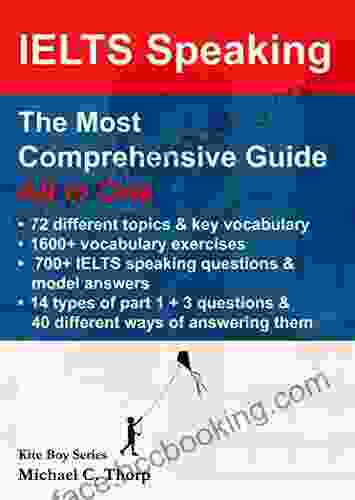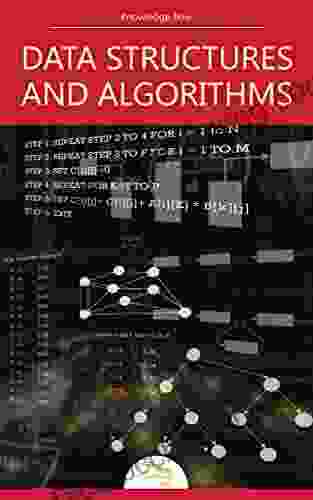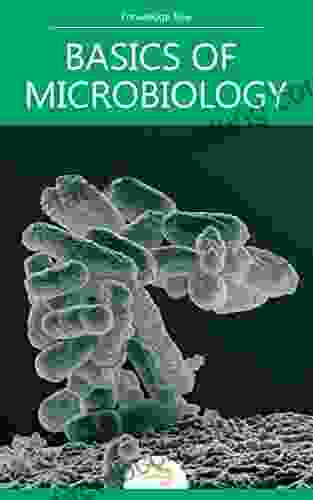Field Manual For Applied Research: A Comprehensive Guide


4.6 out of 5
| Language | : | English |
| File size | : | 7772 KB |
| Text-to-Speech | : | Enabled |
| Screen Reader | : | Supported |
| Enhanced typesetting | : | Enabled |
| Word Wise | : | Enabled |
| Print length | : | 376 pages |
Applied research is a type of research that is conducted to solve a specific problem or to improve a particular process. It is typically conducted by researchers who have a deep understanding of the problem or process they are studying, and who have the skills and experience to design and conduct a research study that will produce valid and reliable results.
This field manual is a comprehensive guide to the principles and practices of applied research. It covers all aspects of the research process, from research design to data collection, analysis, and dissemination. It is written in a clear and concise style, and is packed with practical tips and advice that will help researchers to design and conduct high-quality applied research studies.
Research Design
The first step in any research study is to design a research plan. This plan should outline the research question, the methods that will be used to collect data, and the analysis that will be used to interpret the data.
There are many different types of research designs, each with its own strengths and weaknesses. The best research design for a particular study will depend on the specific research question and the resources that are available.
Some of the most common research designs include:
- Experimental designs: Experimental designs are used to test the effects of one or more independent variables on a dependent variable. In an experimental design, the researcher randomly assigns participants to different treatment groups and then compares the outcomes of the different groups.
- Quasi-experimental designs: Quasi-experimental designs are similar to experimental designs, but they do not involve random assignment to treatment groups. Quasi-experimental designs are often used when it is not possible to randomly assign participants to treatment groups, such as when the participants are already in place or when the researcher does not want to disrupt the natural setting.
- Observational designs: Observational designs are used to study the relationships between variables without manipulating the variables. In an observational design, the researcher simply observes the participants and records the data that is collected.
Data Collection
Once a research design has been selected, the next step is to collect data. There are many different methods for collecting data, each with its own strengths and weaknesses. The best method for collecting data will depend on the specific research question and the resources that are available.
Some of the most common methods for collecting data include:
- Surveys: Surveys are a type of data collection method that involves asking participants questions about their attitudes, beliefs, and behaviors. Surveys can be administered in person, by mail, or online.
- Interviews: Interviews are a type of data collection method that involves asking participants questions about their experiences and perspectives. Interviews can be conducted in person, by phone, or via videoconference.
- Observations: Observations are a type of data collection method that involves observing participants in their natural settings. Observations can be conducted in person or via video.
- Documents: Documents are a type of data collection method that involves collecting written or electronic documents that are relevant to the research question.
Data Analysis
Once data has been collected, the next step is to analyze the data. Data analysis involves using statistical methods to examine the data and identify patterns and trends. The type of data analysis that is used will depend on the specific research question and the type of data that was collected.
Some of the most common methods for data analysis include:
- Descriptive statistics: Descriptive statistics are used to summarize the data and describe the distribution of the data.
- Inferential statistics: Inferential statistics are used to make inferences about the population from which the data was collected.
- Regression analysis: Regression analysis is used to examine the relationship between two or more variables.
- Factor analysis: Factor analysis is used to identify the underlying factors that are responsible for the variation in the data.
Dissemination
Once the data has been analyzed, the next step is to disseminate the results. Dissemination involves sharing the results of the research with other researchers, practitioners, and the general public. There are many different ways to disseminate research results, including:
- Writing a report: A report is a formal document that describes the research question, the methods that were used, the results of the study, and the s that were drawn.
- Giving a presentation: A presentation is a live event in which the researcher presents the results of the study to an audience.
- Publishing an article: An article is a written document that is published in a journal or other academic publication.
- Creating a website: A website is a good way to disseminate research results to a wide audience.
This field manual has provided a comprehensive overview of the principles and practices of applied research. By following the steps outlined in this manual, researchers can design and conduct high-quality applied research studies that will produce valid and reliable results.
The field of applied research is constantly evolving, and new methods and techniques are being developed all the time. It is important for researchers to stay up-to-date on the latest developments in the field so that they can use the most effective methods for their research.
With the help of this field manual, researchers can conduct high-quality applied research studies that will make a positive impact on the world.
4.6 out of 5
| Language | : | English |
| File size | : | 7772 KB |
| Text-to-Speech | : | Enabled |
| Screen Reader | : | Supported |
| Enhanced typesetting | : | Enabled |
| Word Wise | : | Enabled |
| Print length | : | 376 pages |
Do you want to contribute by writing guest posts on this blog?
Please contact us and send us a resume of previous articles that you have written.
 Book
Book Novel
Novel Page
Page Chapter
Chapter Text
Text Story
Story Genre
Genre Reader
Reader Library
Library Paperback
Paperback E-book
E-book Magazine
Magazine Newspaper
Newspaper Paragraph
Paragraph Sentence
Sentence Bookmark
Bookmark Shelf
Shelf Glossary
Glossary Bibliography
Bibliography Foreword
Foreword Preface
Preface Synopsis
Synopsis Annotation
Annotation Footnote
Footnote Manuscript
Manuscript Scroll
Scroll Codex
Codex Tome
Tome Bestseller
Bestseller Classics
Classics Library card
Library card Narrative
Narrative Biography
Biography Autobiography
Autobiography Memoir
Memoir Reference
Reference Encyclopedia
Encyclopedia Greg Verdino
Greg Verdino Richard A Gabriel
Richard A Gabriel Hans Rosling
Hans Rosling Lora M Cecere
Lora M Cecere Guillaume Pitron
Guillaume Pitron Golriz Ghahraman
Golriz Ghahraman Scott Selikoff
Scott Selikoff Mark Shepherd
Mark Shepherd Gustavo Coutinho Bacellar
Gustavo Coutinho Bacellar Ron Reeder
Ron Reeder Piers Anthony
Piers Anthony Kathy Spratt
Kathy Spratt Gretchen Cassel Eick
Gretchen Cassel Eick Ginger Zee
Ginger Zee Goldmine Reads
Goldmine Reads Harriet Posner
Harriet Posner Laurence D Houlgate
Laurence D Houlgate Hailee Oman
Hailee Oman Joyce Harper
Joyce Harper Hanna Alkaf
Hanna Alkaf
Light bulbAdvertise smarter! Our strategic ad space ensures maximum exposure. Reserve your spot today!

 Fletcher MitchellThe Toxic Workplace: A Comprehensive Guide to Surviving and Thriving in a...
Fletcher MitchellThe Toxic Workplace: A Comprehensive Guide to Surviving and Thriving in a...
 Yasunari KawabataUnveiling the Intriguing Lives of Roman Emperors in "The Twelve Caesars" by...
Yasunari KawabataUnveiling the Intriguing Lives of Roman Emperors in "The Twelve Caesars" by...
 Kenneth ParkerThe Definitive Guide to Growing Marijuana for Recreational and Medical Use:...
Kenneth ParkerThe Definitive Guide to Growing Marijuana for Recreational and Medical Use:... Dustin RichardsonFollow ·14k
Dustin RichardsonFollow ·14k Ashton ReedFollow ·17.9k
Ashton ReedFollow ·17.9k Diego BlairFollow ·19.9k
Diego BlairFollow ·19.9k Gary ReedFollow ·15.3k
Gary ReedFollow ·15.3k Demetrius CarterFollow ·6.9k
Demetrius CarterFollow ·6.9k Corbin PowellFollow ·10.7k
Corbin PowellFollow ·10.7k Theodore MitchellFollow ·12.3k
Theodore MitchellFollow ·12.3k Terry BellFollow ·5k
Terry BellFollow ·5k

 Brady Mitchell
Brady MitchellMaster IELTS Speaking: The Ultimate Guide to Success
Kickstart Your IELTS...

 Branden Simmons
Branden SimmonsBack Spin: A Thrilling Myron Bolitar Novel
Get ready to embark on a...

 Marc Foster
Marc FosterData Structures and Algorithms: A Comprehensive Guide to...
In the ever-evolving...

 Jeff Foster
Jeff FosterUnveiling the Basics of Microbiology: A Comprehensive...
The world of...

 J.D. Salinger
J.D. SalingerHold Tight Suspense Thriller: A Gripping Page-Turner That...
Are you ready for a suspense thriller that...
4.6 out of 5
| Language | : | English |
| File size | : | 7772 KB |
| Text-to-Speech | : | Enabled |
| Screen Reader | : | Supported |
| Enhanced typesetting | : | Enabled |
| Word Wise | : | Enabled |
| Print length | : | 376 pages |








